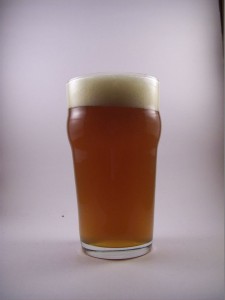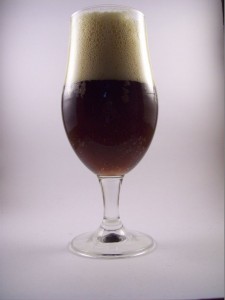The middle child of category eight was built on seven and three-quarters pounds of Maris Otter for proper Englishness. Six and a half ounces each of caramel 120 and aromatic malt as well as three ounces of special roast rounded out the grain bill. Nothing special was required during mashing. The sixty minute boil included nothing but East Kent Golding additions: 1.20 ounces at the beginning, another half ounce at twenty minutes, and a final half ounce during the final minute. Post-boil gravity checked in at 1.043. For fermentation, we used WLP002 English Ale yeast. The primary finished at 1.012 but was disturbingly weird tasting with odd vegetable flavors.
After a long time mellowing out in secondary, the bitter has rounded into drinkabilty. The aroma is decided fruity with perhaps a bit of earthiness underneath; malt is definitely absent. Despite the name, I would note describe it as particularly bitter. It tastes almost exactly how it smells with a very fruity flavor and dry finish. To my surprise this isn’t necessarily wrong as the style guide permits high yeast esters. I’m having trouble picking up much else. There’s a brief moment of bitter in the finish but then the aftertaste shifts right back to the yeast flavors. This came out way more flavorful than I was expecting, but I think the balance is off. Even if it’s technically permissible, I’d like less fruitiness or more bitterness so the latter isn’t entirely buried. A yeasty, fruity ale is great but without the early hops coming through I don’t know what distinguishes this style from other ester-heavy styles.

